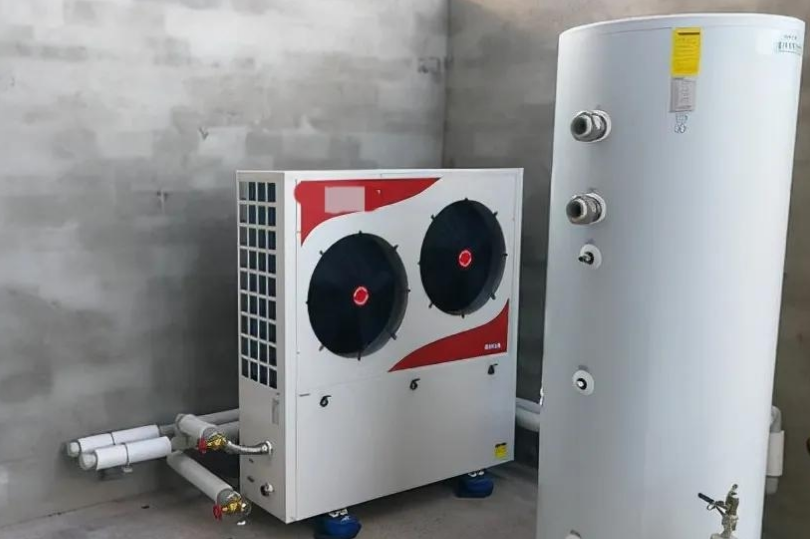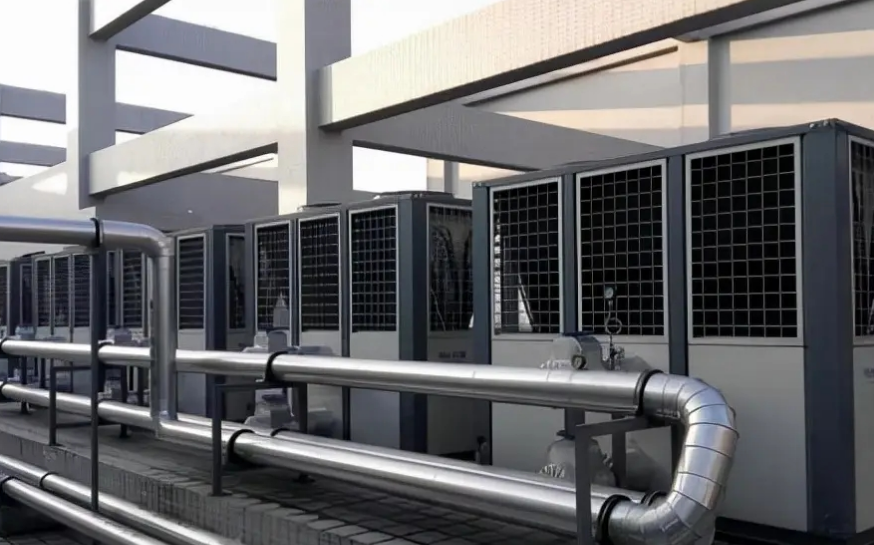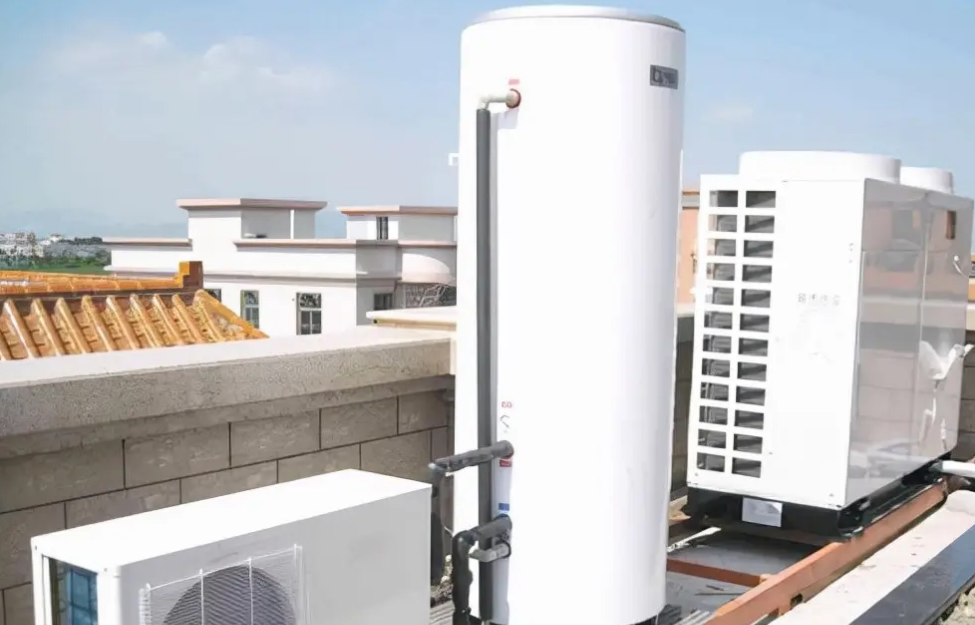With the deepening of northern China’s “coal-to-electricity” initiative, air-source heat pump (ASHP) heating /Heating And Cooling heat pump has become the industry’s rising star. Thanks to its energy-saving and eco-friendly characteristics, this new type of clean energy is not only advancing rapidly in district heating but also gaining popularity among household heating users. Backed by strong government promotion, ASHPs enjoy excellent industry prospects. However, their implementation has faced user skepticism, such as claims that they are not environmentally friendly in terms of energy sources, not energy-efficient in use, and not suitable for rural areas.

1. The Environmental Friendliness of Heating And Cooling heat pump
ASHPs are driven by electricity, and China’s power supply is dominated by coal-fired thermal power, with hydropower mainly prevalent in the south. As a result, coal-fired power generation can lead to severe air pollution and coal cinder waste. Many people therefore believe that the energy source of ASHPs is not environmentally friendly.
The truth is as follows:
- Diversified power sources: China’s power generation is mainly thermal, followed by hydropower, so the south has more abundant power resources. With the implementation of the “West-to-East Power Transmission” and “South-to-North Water Diversion” projects, northern regions now have more access to clean power, supplemented by nuclear, wind, solar, and biomass power, increasing the diversity of power sources. Thermal power is no longer the primary reliance.
- Higher emissions standards for coal-fired power: In 2015, China implemented new environmental emission standards for coal-fired power plants, which are stricter than EU standards. Along with improvements in coal-fired power generation technology, pollution emissions have dropped significantly, coal combustion is more efficient, harmful gas content is lower, and energy efficiency is higher. In contrast, small coal-fired boilers for household heating still suffer from incomplete combustion and high emissions of harmful gases, making them a source of environmental pollution.
- Low power consumption of Heating And Cooling heat pump: ASHPs /Heating And Cooling heat pump use low electricity to drive compressors and absorb free heat from the air, rather than converting electricity directly into heat. Their heating coefficient of performance (COP) is above 3.0, meaning 1 kWh of electricity can move more than 3 times the heat energy. Therefore, they do not require more power to operate, have lower electricity consumption, and do not emit harmful substances—this is the key feature of this new clean energy.

2. The Energy Efficiency of Heating And Cooling heat pump
Data on ASHP heating /Heating And Cooling heat pump show that heating costs are very low, only 25% of those for direct electric heating and 50% of those for gas boiler heating. However, after some users actually used them, costs were found to be higher than both electric and gas boiler heating, leading to misunderstandings about the energy efficiency of ASHP heating.
The truth is as follows:
- Unreasonable unit design: Heating And Cooling heat pump can use fan coil units for cooling and heating, or underfloor heating and radiators for heating. When designing a heating system, the actual required heating capacity must be considered, along with various environmental factors, to determine the optimal equipment power. If the design power is too low, indoor heating performance will be poor and energy consumption will be high; if the design power is too high, the heat pump itself will consume more electricity—while indoor performance improves, energy consumption still rises. Only the appropriate power is the best design. In addition, some companies, to secure low-price deals, may conceal or reduce equipment parameters, ultimately leading to poor heating performance for users.
- Incorrect model selection: ASHPs use inverter technology and enhanced vapor injection, enabling them to provide sufficient indoor heat at temperatures as low as -25°C, suitable for most regions of China. However, they are divided into normal-temperature, low-temperature, and ultra-low-temperature models for different winter temperature environments. In the south, where temperatures are higher, normal-temperature models are sufficient; in northern regions with temperatures above -25°C, low-temperature models are used; in the northeast, where temperatures drop below -25°C, only ultra-low-temperature models are suitable. Using normal-temperature models in low-temperature areas will inevitably increase power consumption and may cause the unit to shut down and stop working.
- Poor building insulation: For all heating equipment, better building insulation results in less heat loss and lower energy consumption. If a building has poor insulation, heating will consume more energy. Frequent window opening for ventilation or keeping windows open while using heating during operation can lead to excessive heat loss, also causing increased energy consumption.

3. The Practicality of Heating And Cooling heat pump
ASHPs /Heating And Cooling heat pump can be used for district heating, but for household heating, installation with government subsidies can save a lot of initial costs; without subsidies, users must bear the full cost of equipment purchase and installation, which many ordinary families cannot afford. Additionally, some people believe that ASHP outdoor units are very large and difficult to install, that household installation conditions are hard to meet, and that the noise from indoor and outdoor units during use is loud, disturbing their own and neighbors’ lives.
The truth is as follows:
- Dual-use is more cost-effective than single-use: ASHP systems use water as the heat transfer medium, which can be heated to 35–60°C or cooled to 0–10°C. Indoor terminals can be connected to fan coil units for cooling and heating, or to underfloor heating and radiators for heating. However, the price of ASHP outdoor units is relatively high; if only heating is considered and not air conditioning, the cost is quite expensive. If both underfloor heating and central air conditioning are installed together, the cost is more cost-effective. Therefore, ASHPs are suitable for combined installation with air conditioning and underfloor heating; using them solely as a heat source for underfloor heating is more expensive.
- Small-power Heating And Cooling heat pump are similar in size to ordinary air conditioner outdoor units: The size of ASHPs is often perceived as very large, suitable for villas but not for elevator apartments. In fact, ASHPs also come in different power ratings. Small-household ASHP outdoor units are only slightly wider than ordinary central air conditioner outdoor units and can fit in standard air conditioner外机 positions. As for water tanks and other components, they can be directly wall-mounted. Moreover, the piping connected to ASHPs is longer than that of fluorinated air conditioners, and with high-power water pumps, they can be placed on the ground or roof across multiple floors. Therefore, installing ASHP outdoor units is very simple.
- The noise of household ASHPs is similar to that of ordinary air conditioners: The noise of ASHPs is often thought to be very loud. Some users, upon seeing the loud, rumbling noise from large district heating units (due to the large number of heat pump outdoor units operating simultaneously, causing noise superposition), assume that household ASHP outdoor units will have the same noise level. In reality, the noise of household ASHP outdoor units is usually 50–60 decibels, similar to that of ordinary central air conditioners, and the noise of indoor units is even lower than that of ordinary air conditioners. Therefore, the use of household ASHPs does not produce excessive noise that would affect normal life.

Summary
ASHPs /Heating And Cooling heat pump have the characteristics of comfort, stability, energy efficiency, environmental friendliness, safety, long service life, and wide applicability, which is why they have played a significant role and taken center stage in the implementation of the “coal-to-electricity” policy. The environmental friendliness, energy efficiency, and applicability of ASHPs have been validated through reasonable design and practical experience. Therefore, ASHPs are highly environmentally friendly, highly energy-efficient, and widely applicable—don’t misunderstand these three advantages of ASHP heating anymore.

